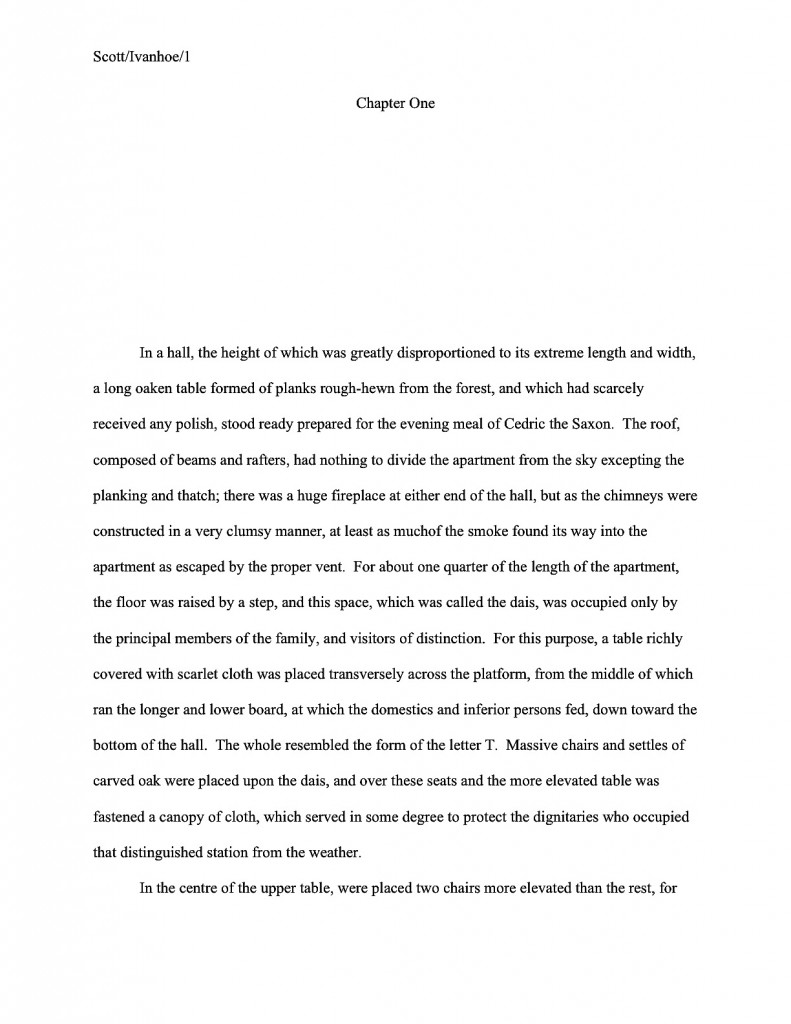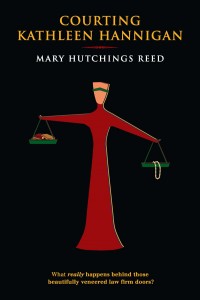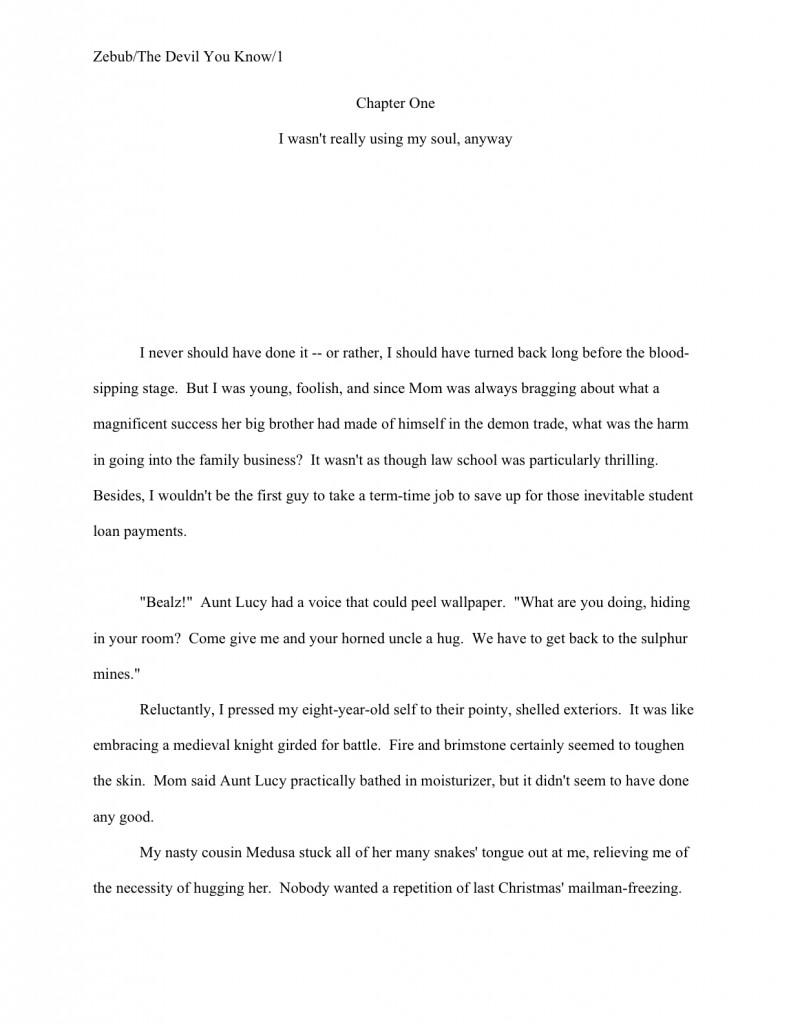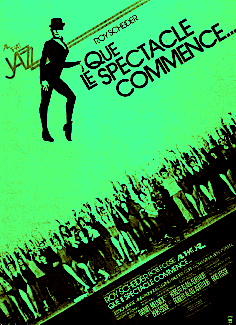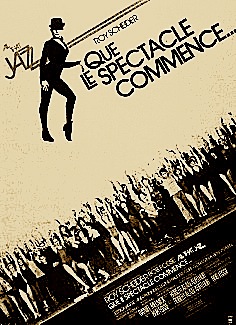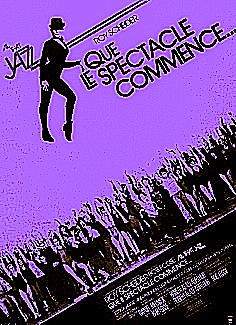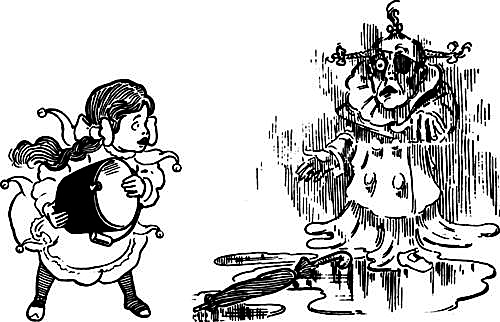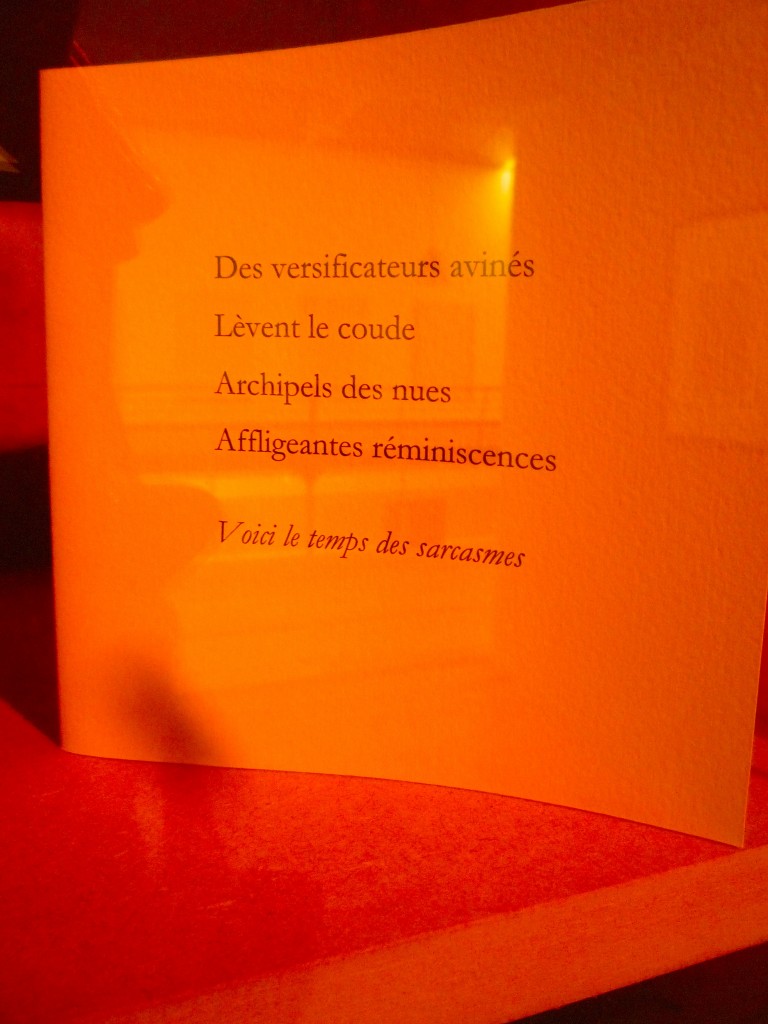
I’m so sorry, everyone — my website experienced a wee meltdown late Thursday night. Some hidden toggle evidently got switched, and ever since, apparently, it has been impossible to post a comment on my last post. Rather unfriendly, wasn’t it, since I’d specifically asked all of you to comment with questions?
Rest assured, any reluctance to hear from you rested firmly on the technology side, not the human one. So please, feel free to comment away.
This would be an especially good time to bring up any long-smoldering concerns about formatting, actually, since I’m going to be devoting next week’s posts to showing you how standard format for manuscripts looks on the printed page. Some of my best examples were derived from readers’ questions; this time around, in fact, in response to a recent reader’s request, I’m going to be adding an entire post on how to format a book proposal.
So if there’s a principle we’ve discussed within the last few days that you’d like to see in action, please, don’t be shy.
Today, I’m going to be wrapping up my theoretical discussion of standard format. In the interest of having all of the rules listed in a single post, let’s recap what we’ve already covered.
(1) All manuscripts should be printed or typed in black ink and double-spaced, with one-inch margins around all edges of the page, on 20-lb or better white paper.
(2) All manuscripts should be printed on ONE side of the page and unbound in any way.
(3) The text should be left-justified, NOT block-justified. By definition, manuscripts should NOT resemble published books in this respect.
(4) The preferred typefaces are 12-point Times, Times New Roman, Courier, or Courier New — unless you’re writing screenplays, in which case you may only use Courier. For book manuscripts, pick one (and ONLY one) and use it consistently throughout your entire submission packet.
(5) The ENTIRE manuscript should be in the same font and size. Industry standard is 12-point.
(6) Do NOT use boldface anywhere in the manuscript BUT on the title page — and not even there, necessarily.
(7) EVERY page in the manuscript should be numbered EXCEPT the title page.
(8) Each page of the manuscript (other than the title page) should have a standard slug line in the header. The page number should appear in the slug line, not anywhere else on the page.
(9) The first page of each chapter should begin a third of the way down the page, with the chapter title appearing on the FIRST line of the page, NOT on the line immediately above where the text begins.
(10) Contact information for the author belongs on the title page, NOT on page 1.
(11) Every submission should include a title page, even partial manuscripts.
(12) The beginning of EVERY paragraph of text should be indented .5 inch. No exceptions, ever.
(13) Don’t skip an extra line between paragraphs, except to indicate a section break.
(14) NOTHING in a manuscript should be underlined. Titles of songs and publications, as well as words in foreign languages and those you wish to emphasize, should be italicized.
All of those make sense, I hope, at least provisionally? Excellent. Moving on…
(15) All numbers under 100 should be written out in full: twenty-five, not 25. But numbers over 100 should be written as numbers: 1,243, not one thousand, two hundred and forty-three.
I’m surprised how often otherwise industry-savvy aspiring writers are unaware of this particular rule, but the instinct to correct it in a submission is universal in professional readers. Translation: NOT doing it will not help you win friends and influence people at agencies and publishing houses.
Like pointing out foreign-language words with special formatting, this formatting rule was originally for the benefit of the manual typesetters. When numbers are entered as numbers, a single slip of a finger can result in an error, whereas when numbers are written out, the error has to be in the inputer’s mind.
There are only two exceptions to this rule: dates and, of course, page numbers. Thus, a properly-formatted manuscript dealing with events on November 11 would look like this on the page:
ABBOTT/THE GREAT VOYAGE/82
On November 11, 1492, fifty-three scholars divided into eighteen parties in preparation for sailing to Antarctica. It took 157 rowboats ten trips apiece to load all of their books, papers, and personal effects onboard.
And not like this:
ABBOTT/THE GREAT VOYAGE/Eighty-two
On November eleventh, fourteen hundred and ninety-two, fifty-three scholars divided into eighteen parties in preparation for sailing to Antarctica. It took a hundred and fifty-seven rowboats ten trips apiece to load all of their books, papers, and personal effects onboard.
Do I see some hands waving in the air? “But Anne,” inveterate readers of newspapers protest, “I’m accustomed to seeing numbers like 11, 53, 18, and 10 written as numerals in print. Does that mean that when I read, say, a magazine article with numbers under 100 depicted this way, that some industrious editor manually changed all of those numbers after the manuscript was submitted?”
No, it doesn’t — although I must say, the mental picture of that poor, unfortunate soul assigned to spot and make such a nit-picky change is an intriguing one. What you have here is yet another difference between book manuscript format and, well, every other kind of formatting out there: in journalism, they write out only numbers under 10.
Unfortunately, many a writing teacher out there believes that the over-10 rule should be applied to all forms of writing, anywhere, anytime. Yes, this is true for newspaper articles, where space is at a premium, but in a book manuscript, it is WRONG, WRONG, WRONG.
Did I mention it was wrong? And that my aged eyes have actually seen contest entries knocked out of finalist consideration over this particular issue? More than once? And within the year?
AP style differs from standard format in several important respects, not the least being that in standard format (as in other formal presentations in the English language), the first letter of the first word after a colon should NOT be capitalized, since technically, it’s not the beginning of a new sentence. I don’t know who introduced the convention of post-colon capitalization, but believe me, I’m not the only one who read the submissions of aspiring book writers for a living that’s mentally consigned that language subversive to a pit of hell that would make even Dante avert his eyes in horror.
That’s the way we nit-pickers roll. We like our formatting and grammatical boundaries firm.
Heck, amongst professional readers, my feelings on the subject are downright mild. I’ve been in more than one contest judging conference where tables were actually banged and modern societies deplored. Trust me, you don’t want your entry to be the one that engenders this reaction.
So let’s all chant it together, shall we? The formatting and grammatical choices you see in newspapers will not necessarily work in manuscripts or literary contest entries.
Everyone clear on that? Good, because — are you sitting down, lovers of newspapers? — embracing journalistic conventions like the post-colon capital and writing out only numbers under ten will just look like mistakes to Millicent and her ilk on the submission page.
And no, there is no court of appeal for such decisions; proper format, like beauty, is very much in the eye of the beholder. So if you were planning to cry out, “But that’s the way USA TODAY does it!” save your breath.
Unfortunately, although my aforementioned heart aches for those of you who intended to protest, “But how on earth is an aspiring writer to KNOW that the standards are different?” this is a cry that is going to fall on deaf ears as well. Which annoys me, frankly. The sad fact is, submitters rejected for purely technical reasons are almost never aware of it. With few exceptions, the rejecters will not even take the time to scrawl, “Take a formatting class!” or “Next time, spell-check!” on the returned manuscript. If a writer is truly talented, they figure, she’ll mend her ways and try again.
And that, in case any of you had been wondering, is why I revisit the topic of standard format so darned often. How can the talented mend their ways if they don’t know how — or even if — their ways are broken?
(16) Dashes should be doubled — rather than using an emdash — with a space at either end. Hyphens are single and are not given extra spaces at either end, as in self-congratulatory.
Yes, yes, I know: you’ve probably heard that this rule is obsolete, too, gone the way of underlining. The usual argument for its demise: books no longer preserve these spaces, for reasons of printing economy, so many writing teachers tell their students just to go ahead and eliminate them. An AP-trained teacher will tell you to use the longer emdash, as will the Chicago Manual of Style.
In this, however, they are wrong, at least as far as manuscripts are concerned. (You’re starting to get used to that, right?)
Standard format is invariable upon this point: a doubled dash with a space on either end is correct; anything else is not. And yes, it is indeed a common enough pet peeve that the pros will complain to one another about how often submitters get it wrong.
They also whine about how often they see manuscripts where this rule is applied inconsistently: two-thirds of the dashes doubled, perhaps, sometimes with a space at either end and sometimes not, with the odd emdash and single dash dotting the text as well. It may seem like a minor, easily-fixable phenomenon from the writer’s side of the submission envelope, but believe me, inconsistency drives people trained to spot minor errors nuts.
Your word-processing program probably changes a double dash to an emdash automatically, but CHANGE IT BACK. If only as a time-saver: any agent would make you do this before agreeing to submit your manuscript to an editor, so you might as well get into this salutary habit as soon as possible.
(17) Adhere to the standard rules of punctuation and grammar, not what it being done on the moment in newspapers, magazines, books, or on the Internet — including the rule calling for TWO spaces after every period and colon.
In other words, do as Strunk & White say, not what others do. Assume that Millicent graduated with honors from the best undergraduate English department in the country, taught by the grumpiest, meanest, least tolerant stickler for grammar that ever snarled at a student unfortunate enough to have made a typo, and you’ll be fine.
Imagining half the adults around me in my formative years who on the slightest hint of grammatical impropriety even in spoken English will work, too.
The primary deviation I’ve been seeing in recent years is leaving only one space, rather than the standard two, after a period. Yes, printed books often do this, to save paper (the fewer the spaces on a page, the more words can be crammed onto it, right?). A number of writing-advice websites, I notice, and even some writing teachers have been telling people that this is the wave of the future — and that adhering to the two-space norm makes a manuscript look obsolete.
At the risk of sounding like the harsh grammar-mongers of my youth, poppycock. Although some agents and editors do now request eliminating the second space at the submission stage, the doubled space is still the norm. Agents, very good ones, routinely submit manuscripts with doubled spaces to editors, also very good ones, all the time. Successfully.
So when in doubt, adhere to the rules of English. Unless, of course, you happen to be submitting to one of those people who specifically asks for single spaces, in which case, you’d be silly not to bow to their expressed preferences. (Sensing a pattern here?)
Fortunately, for aspiring writers everywhere, those agents who do harbor a strong preference for the single space tend not to keep mum about it. If they actually do tell their Millicents to regard a second space as a sign of creeping obsolescence, chances are very, very good that they’ll mention that fact on their websites.
Double-check before you submit. If the agent of your dreams has not specified, double-space.
Why should that be the default option, since proponents of eliminating the second space tend to be so very vocal? Those who cling to the older tradition are, if anything, more vehement.
Why, you ask? Editing experience, usually. Preserving that extra space after each sentence in a manuscript makes for greater ease of reading, and thus editing. As anyone who has ever edited a long piece of writing can tell you, the white space on the page is where the comments — grammatical changes, pointing out flow problems, asking, “Does the brother really need to die here?” — go.
Less white space, less room to comment. It really is that simple.
Oh, and it drives the grammar-hounds nuts to hear that time-honored standards are being jettisoned in the name of progress. “What sane human being,” they ask through gritted teeth, “seriously believes that replacing tonight with tonite, or all right with alright constitutes progress? Dropping the necessary letters and spaces doesn’t even save significant page space!”
Those are some pretty vitriol-stained lines in the sand, aren’t they?
Let’s just say that until everyone in the industry makes the transition editing in soft copy — which is, as I have pointed out many times in this forum, both harder and less efficient than scanning a printed page — the two-space rule is highly unlikely to change universally. Just ask a new agent immediately after the first time he’s submitted to an old-school senior editor: if he lets his clients deviate from the norms, he’s likely to be lectured for fifteen minutes on the rules of the English language.
I sense that some of you are starting to wring your hands and rend your garments in frustration. “I just can’t win here! Most want it one way, a few another. I’m so confused about what’s required that I keep switching back and forth between two spaces and one while I’m typing.”
I hate to be the one to break it to you, but inconsistent formatting is likely to annoy both sides of the aisle. Whichever choice you embrace, be consistent about it throughout your manuscript; don’t kid yourself that an experienced professional reader isn’t going to notice if you sometimes use one format, sometimes the other.
He will. So will a veteran contest judge. Pick a convention and stick with it.
But don’t fret over it too much. This honestly isn’t as burning a debate amongst agents and editors as many aspiring writers seem to think. Both ways have advocates, and frankly, there are plenty of agents out there who report that they just don’t care.
As always: check before you submit. If the agent’s website, contest listing, and/or Twitter page doesn’t mention individual preferences, assume s/he’s going to be submitting to old-school editors and retain the second space.
And be open to the possibility — brace yourselves; you’re not going to like this — that you may need to submit your manuscript formatted one way for a single agent on your list, and another for the other nineteen.
I told you that you weren’t going to like it.
(18) Turn off the widow/orphan control; it gives pages into an uneven number of lines.
That one’s pretty self-explanatory, isn’t it? Think of it as my Valentine’s Day present to you.
What, too practical? You would have preferred something made out of lace or chocolate?
There you have it: the rules. Practice them until they are imbedded into your very bones, my friends: literally every page of text you submit to an agent, editor, or literary contest (yes, including the query letter and synopsis) for the rest of your professional life should be in standard format.
Okay, so maybe that’s not the most romantic view of the future imaginable, but we’re all about practicality here at Author! Author! That, and drawing some much-needed lines in the sand.
Happy Valentine’s and Presidents’ Days, everybody. Keep up the good work!



